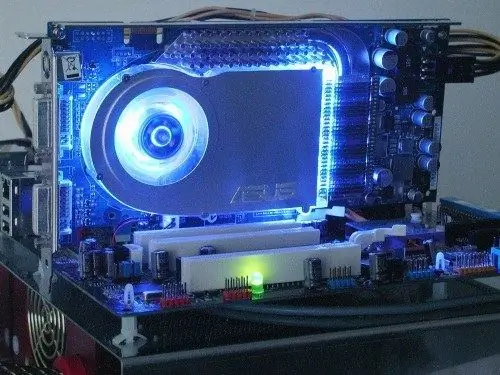A video card is an expansion card inside a computer designed to accelerate 3D graphics and display images on a monitor screen. The performance of the computer in 3D games depends on the power of the video card. It is specially adapted to generate 3D models faster than using the CPU and various special effects such as water reflection, transparency and lighting.

It is necessary
Computer with video card, GPU-Z utility
Instructions
Step 1
To get detailed information about the video card installed in the computer, there is a special program GPU-Z. It is distributed free of charge and does not require installation on a computer, displaying the characteristics of the video card immediately after launch.
Step 2
GPU-Z has several tabs. The first tab of the Graphics Card displays information about the name of the video card and its characteristics. The Name field contains the manufacturer and model of the video card. The GPU model is displayed in the GPU field. You can determine which version of DirectX is supported by your graphics card in the DirectX Support field.
Step 3
The Memory Size field displays the amount of RAM on the video card, Memory Type - its type, Bus Width - the width of the video card bus, and Bandwidth - its bandwidth. The block of fields GPU Clock and Default Clock displays the current and factory frequencies of the GPU, memory and shader processors, respectively.
Step 4
At the very bottom of the Graphics Card tab is the Computing line, which displays the computing technologies supported by the video card. In it you can get information about support for distributed computing technology CUDA, physics simulation with the PhysX video card, and others. If you hover the mouse over the required technology, you will receive detailed information about its version, supported by the video card and the degree of its support.
Step 5
The second tab - Sensors, shows information about the load, temperature and the current mode of operation of the video card in real time. Here you can see the current frequencies at which the GPU, memory and shader processors are operating in similar fields as in the Graphics Card tab. The GPU Temperature field displays the current GPU temperature. The Memory Used field displays the amount of used video memory. The current GPU load is displayed in the GPU Load field.
Step 6
You can take a screenshot of the displayed characteristics or the state of the video card by clicking on the small camera icon in the upper right corner, and also find out information about the load on the video card and its temperature during the game. To do this, check the boxes for the Log to File and Continue refreshing this screen while GPU-Z is in background items on the Sensors tab.






